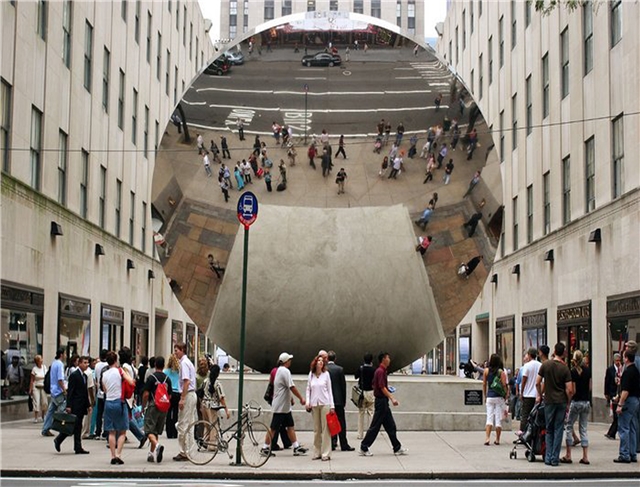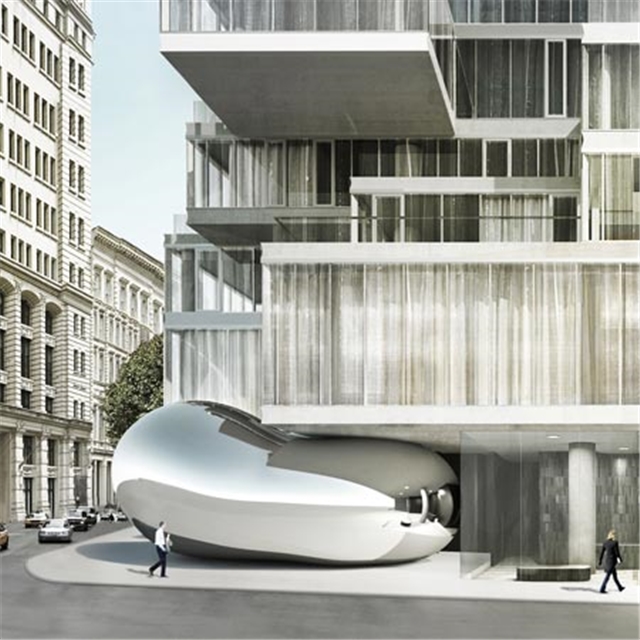We are increasingly less reluctant to recognize our search for commercial success. If we, as a profession, still have any qualms, developers will remind us who is paying for the building. To a lesser or greater extent, most buildings today are designed to be attractive in terms of sales. We are not totally aware that the phenomenon is unstoppable and that it will revolutionize the entire architectural scene.
Let us look at what has happened in the world of jewelry. Ten years ago, the owner of a local jewelry store could believe he had a good business. Shops established over time had an aura of respectability. Customers went to purchase a special gift for a family celebration. Acquiring a jewel was a safe value. It was an investment and savings at the same time, but it also involved enjoying a possession. A diamond, a pearl, a pendant, a watch.
Nowadays, most local jewelry stores are shuttering their premises. It is no longer trendy to wear a pearl set in a ring. No longer is the value jewel in itself the question, but rather the value of the brand. A costume jewelry bracelet is what sells today, if it is associated to a brand. For the same price, we would rather buy a leather bracelet with many beads hanging from it than a “jewel”. Yet, not just any bracelet, but a Dolce & Gabbana one or a Tous capable of convincing society of the value of their products through their incredible marketing campaigns. We have stopped buying real value (gold, silver, and diamonds) and have started to buy fictitious value (a Tous teddy bear).
Leaving the jewelers aside, let’s focus on the imported industrialization of an emerging nation. The result: costume jewelry dominates malls while local jewelry stores close their doors or barely survive by changing old watch batteries. Incredulous jewelers are appalled by this situation. They are the professionals and can therefore define what has value. They are probably right. Yet, market strategies have expelled them from a fiefdom they once ruled over.
Extrapolating the jewelry scenario to architecture, I observe a similar trend. Small craftsmen (architects) will disappear because they do not understand the value of a brand. And they do not understand that competitions are won by a rendering, a slogan, or simply the name of a foreign architect. They do not realize that the profession has changed and that those commissioning projects are looking for new values.
The problem – in this field as well - is determining price and understanding that just as a jewel can be compared with costume jewelry, the value of a building no longer depends on what it costs, nor the value that we experts assign it. The price is defined by the market and is what the market itself will bear. This is where sale strategies appear, as tools that allow us to ensure the value of a building in the future.
There are cases such as Herzog & De Meuron, who incorporate works of art into their New York skyscrapers. It may seem anecdotal, one more appealing feature of a building. Yet, that is not the case. Anish Kapoor is an English artist-sculptor with Indian roots who is very highly regarded thanks to his installation in the Turbine Hall of London’s Tate Modern, among other works. His “jewel”, the sculpture on the ground floor, cost the developer more than the fees of the world-famous Swiss architects who designed a skyscraper with 145 housing units.
If the developer pays for the sculpture it is because he knows that he can break it up into portions of shares and link every fraction to each apartment. He will explain to each potential buyer that his unit, aside from its appreciation or not as a real estate asset, can also appreciate with its value in the art world.
That is the power of sales strategies.







